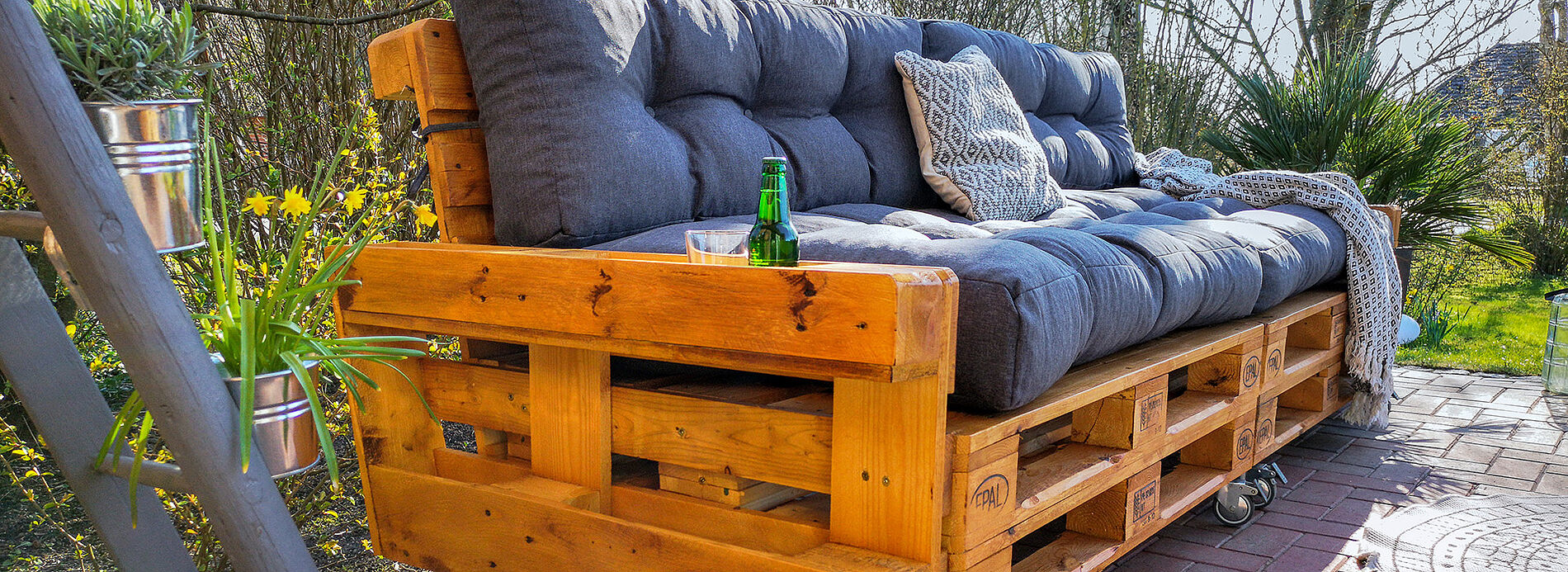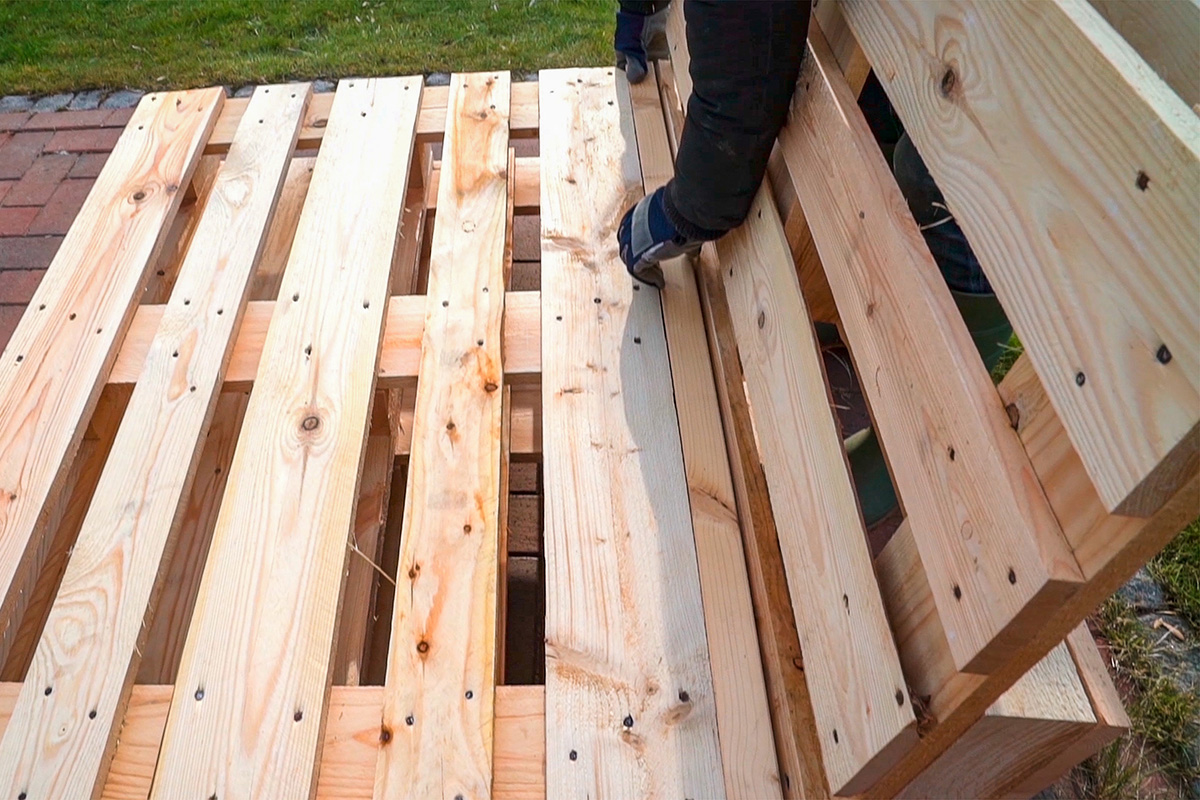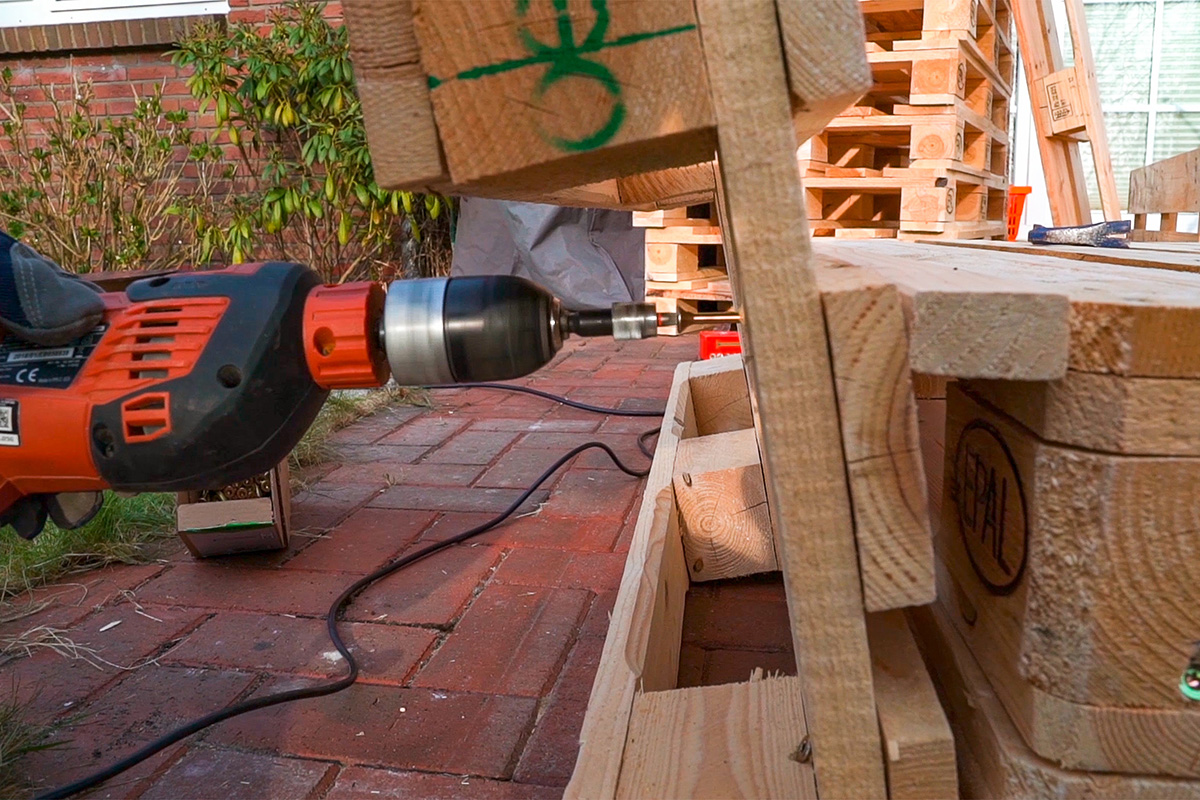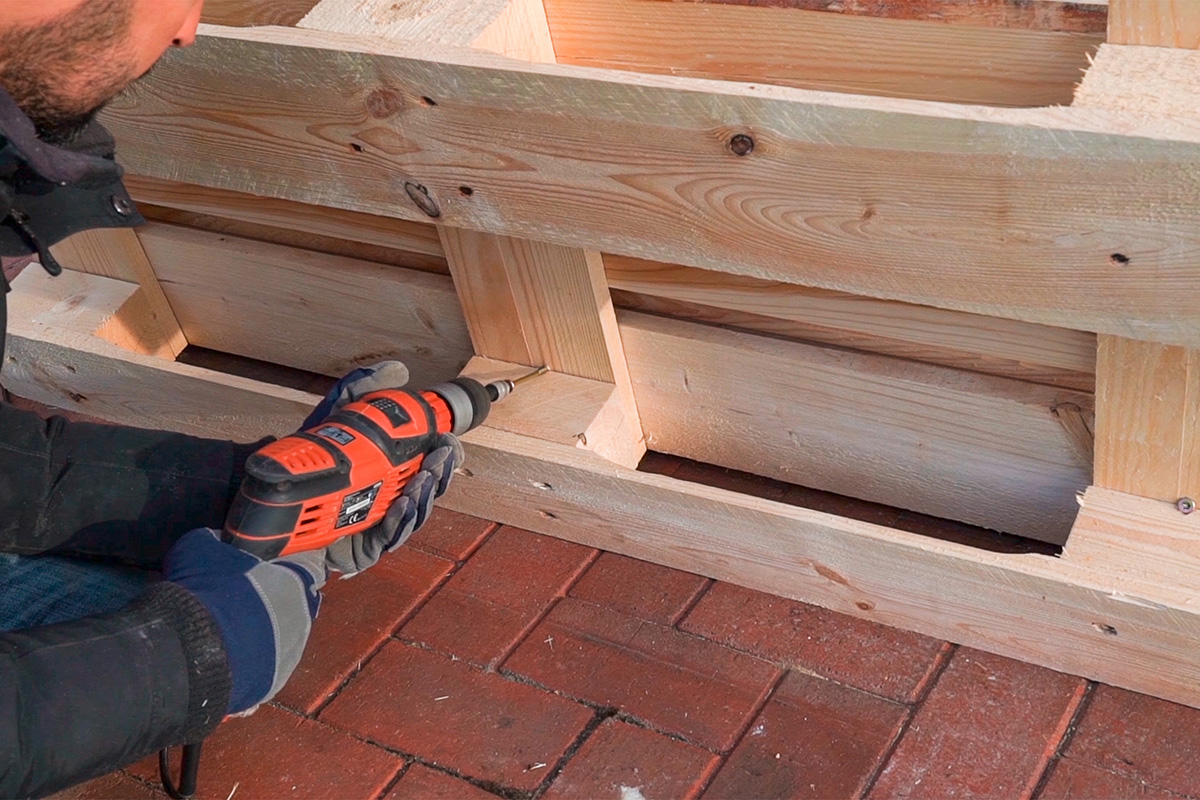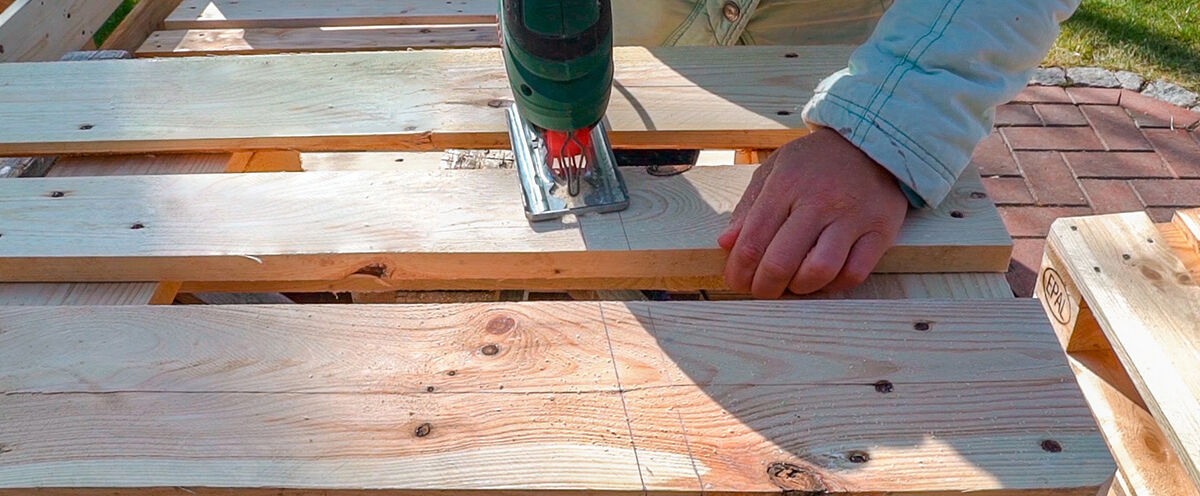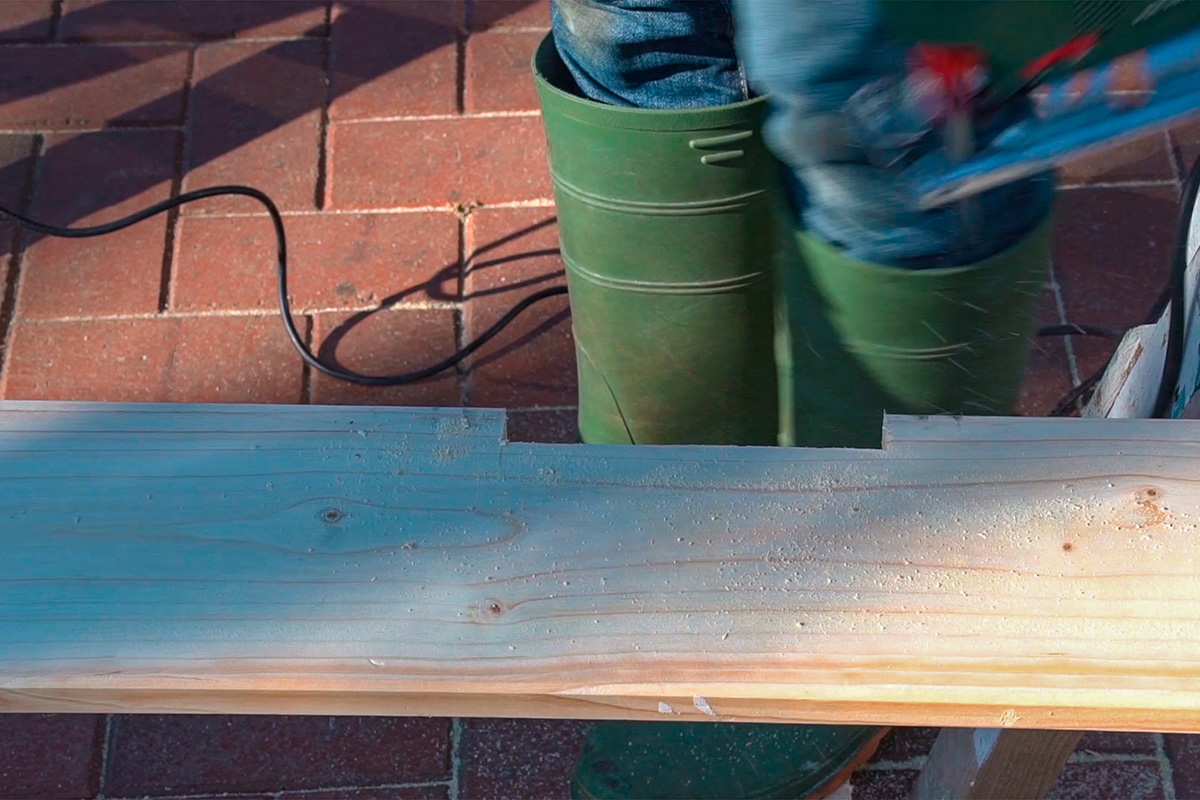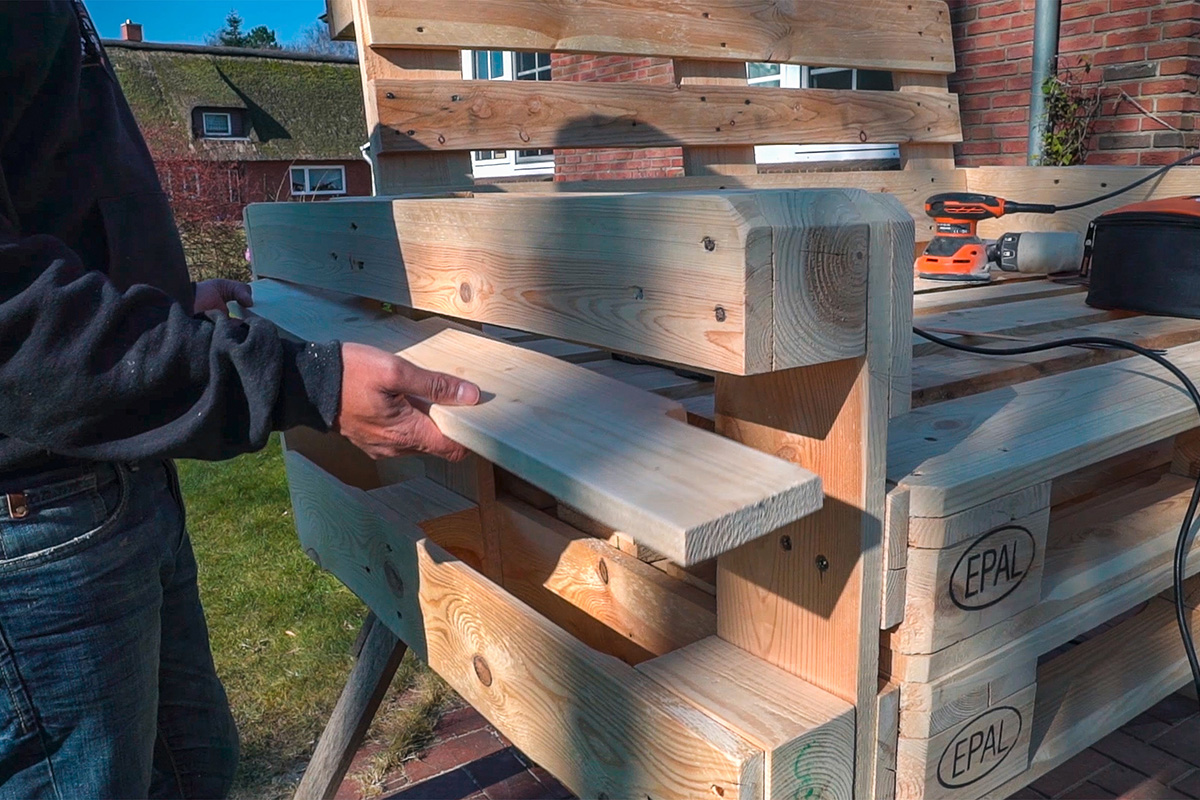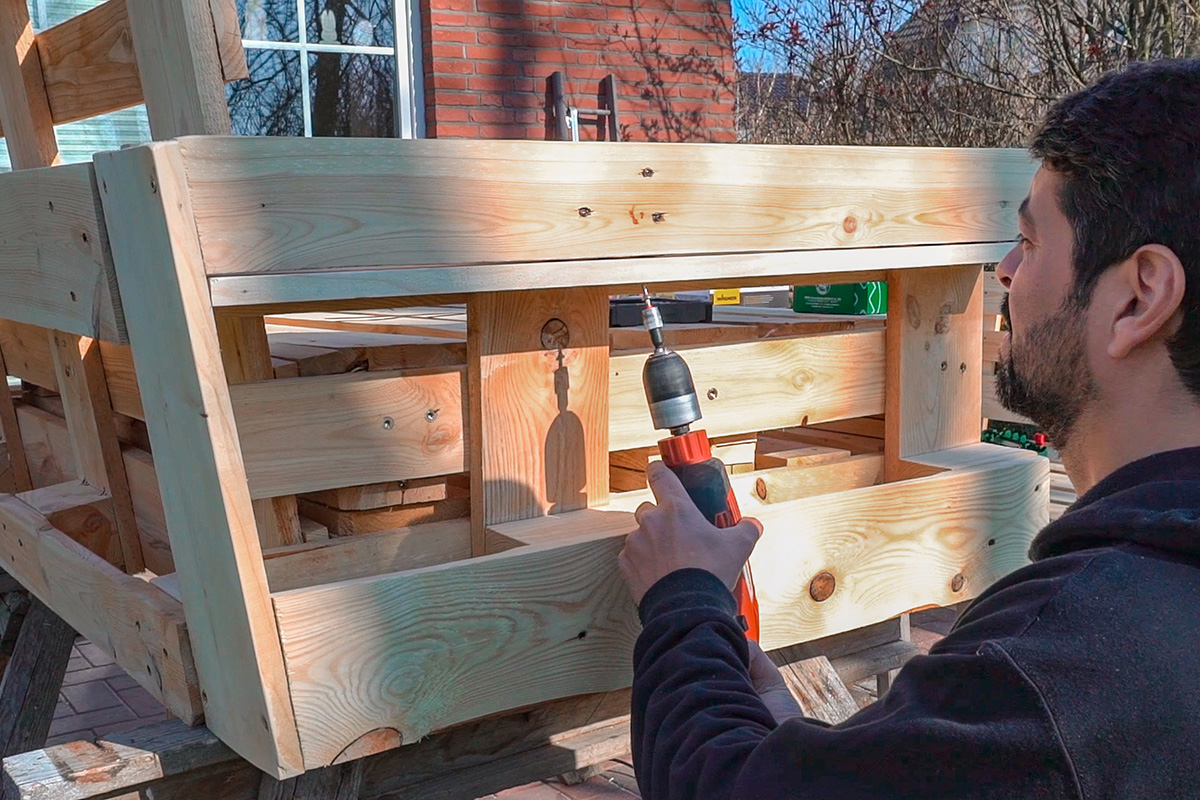A customised open-air living room in the garden – it sounds like hours of relaxing in the sun, unwinding and taking it easy with the whole family. In our tutorial, we show you step-by-step how to easily create a cosy lounge nook in your outdoor area out of Euro pallets. Two seat units and a small table – and your homley open-air area is done.
Contact
Language:
International •
English
- Do-it-yourself Do-it-yourself
- Contractor Contractor
- Industry Industry
- Company
- Careers
-
Contact
Language: International • English

